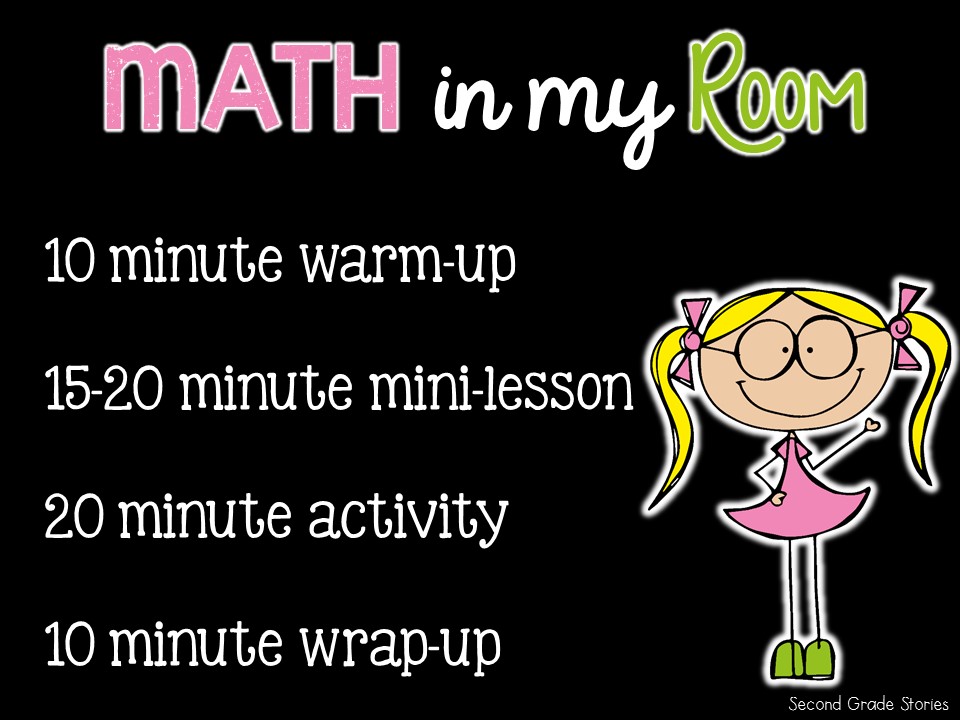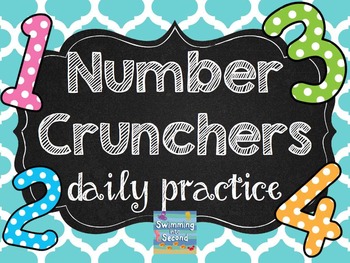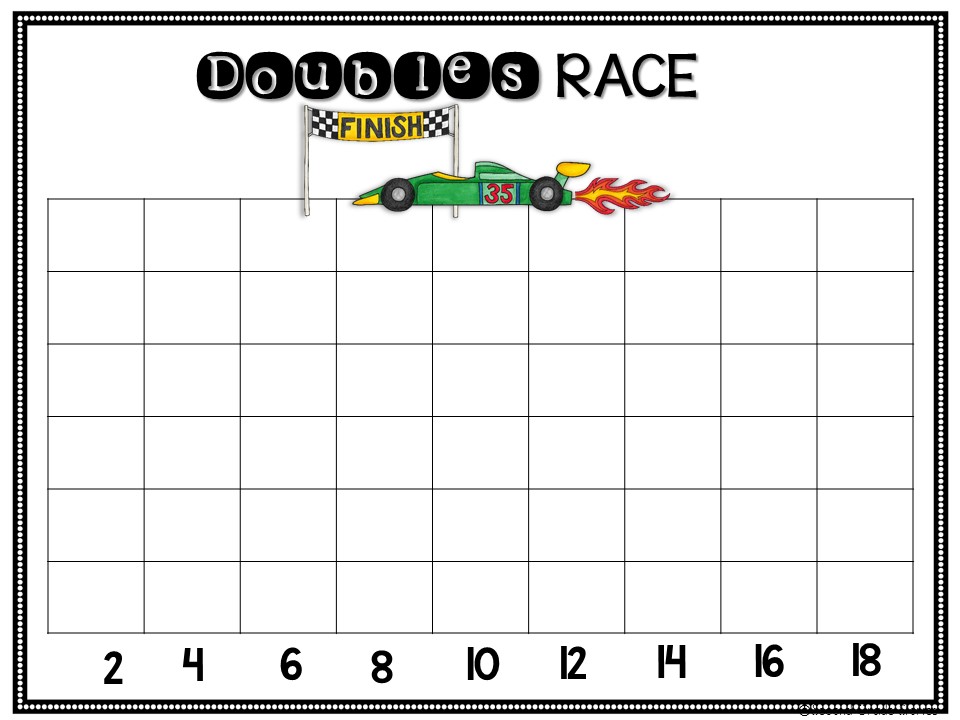I am lucky enough to have a full hour for my math instruction - and then another half hour after that as a math intervention time. (I'll tell you more about that later!) Let's take a closer look at each part.
I do A LOT of math during my morning calendar time (on the Smartboard). But I always want to make sure we are reviewing everything and touching on things to come. I've been using two things each day for our warm-up
Again, I've found it easiest to project it onto our smartboard and work through the problems together. We move fast so all my kiddos stay involved. We've only done a couple weeks of them, but I'm seeing lots of engagement and great progress so far!
Next comes the mini-lesson. This is the skill or concept we are focusing on for the day. I do a combination of Smartboard activities, manipulatives, partner work, etc.... whatever works to get the point across! My objective is to keep this short and engaging - I know I'll be able to follow up with everyone in the next part of math and provide any support or enrichment needed.
I'll share what we did this week to review doubles facts. (We are working on addition strategies so we can "see it and say it", rather than count all the time!) I started by asking what doubles were, what the word meant and we listed the facts on the board. We had a quick discussion about what we noticed - counting by 2's, even sums, etc. This was really a review from last year, so I didn't send much time with the introduction. In the past I have used this book to kick start our discussion.
What I really wanted to was to have them add their doubles facts to the math notebooks for future reference ("future" meaning tomorrow when we did near doubles :-) I love using interactive notebooks and I have to say, we are getting pretty fast at cutting and gluing!
These come from Ashley at Lucky Little Learners. I also use these created by Blair Turner.
Ok, after the mini-lesson, it's time for my favorite part!
I think I like his part the best because my kiddos get to apply and work with what we've been learning - and I get to see how it goes! Sometimes I have a partner game to do, sometimes it's independent (task cards, maybe a sheet to do...) and sometimes we do small groups (well, maybe not SMALL groups, since it's just my IA and myself so there are 10 kids in each group - but it's better than a group of 20!) Sometimes my IA or I will pull a small group during this time to enrich or support, while the other person monitors the activity. It all just depends on what we've noticed during the whole group part.
When we did doubles, I created a quick doubles race game for some practice. I paired students up and each got a 10-sided dice, game board (in a sheet protector) and dry erase marker. They took turns rolling the die, saying the doubles fact and then putting an X on the graph to show the sum. The idea was to see which sum won by reaching the top first.
Simple? Ridiculously so. Did they like it? They still ask to play it in the morning for morning work - and we know our doubles pretty well now!
You can download the game by clicking on the image. I also included a gameboard with just 2-12, if you want to use a 6-sided dice. I copied the boards back to back and had some of my kiddos start on the 12 board and then work up to the one up to 18. (There are 2 other activities, too - one for near doubles and one for making 10. Enjoy!)
That's it! This model seems to work well for my kiddos. It gives them the right mix of whole group, small group and independent work. The activity time gives me a chance to work with small groups and/or see how each student is doing and allows me to differentiate, as needed. We're starting our "official" math centers this week, so I'll be back later to share how that goes!















Thanks so much for sharing those great games! I'm sure my kids will love them :)
ReplyDeleteKarli